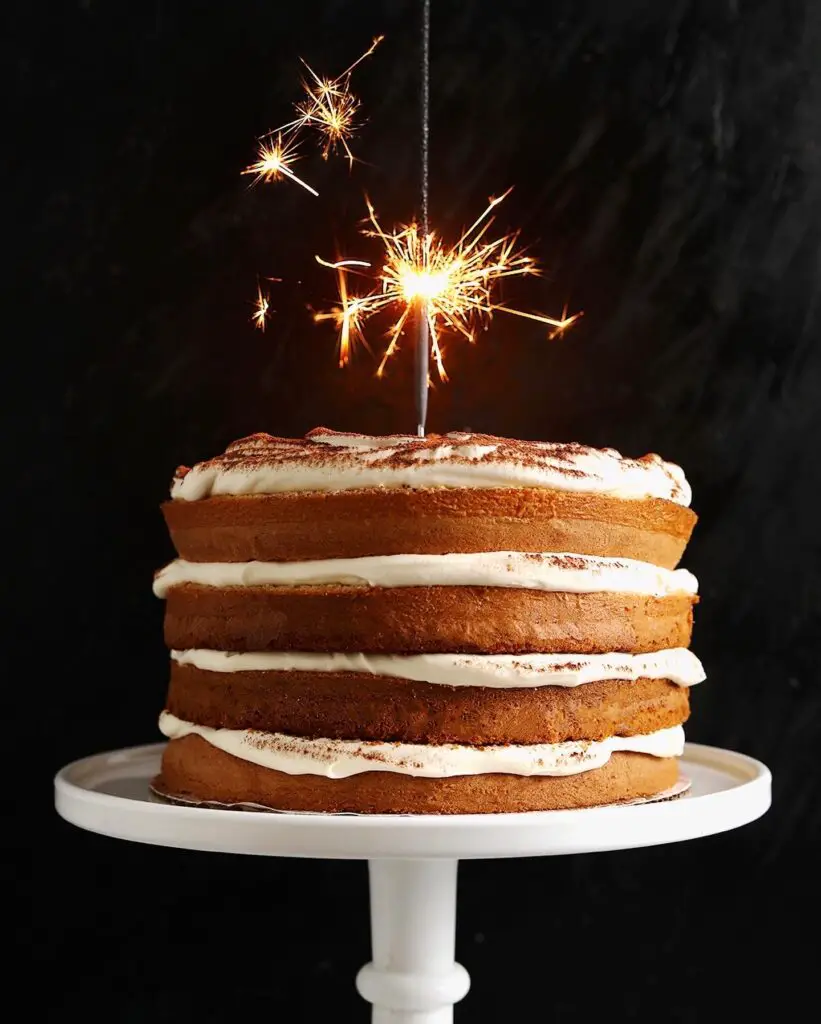
I promised you a tiramisu layer cake ONE WHOLE YEAR AGO, and now I’m delivering. This dessert is somehow rich and light, and I just think it looks festive, so I wanted to share this with you all before Christmas and New Years. (Plus, a little caffeine could help you stay up to ring in the new year… and maybe also wake up the next morning.)
In this recipe, a spongy chiffon cake replaces the typical lady fingers that are traditionally soaked in espresso in the Italian original. Keep reading for a couple important tips you should keep in mind while making this.
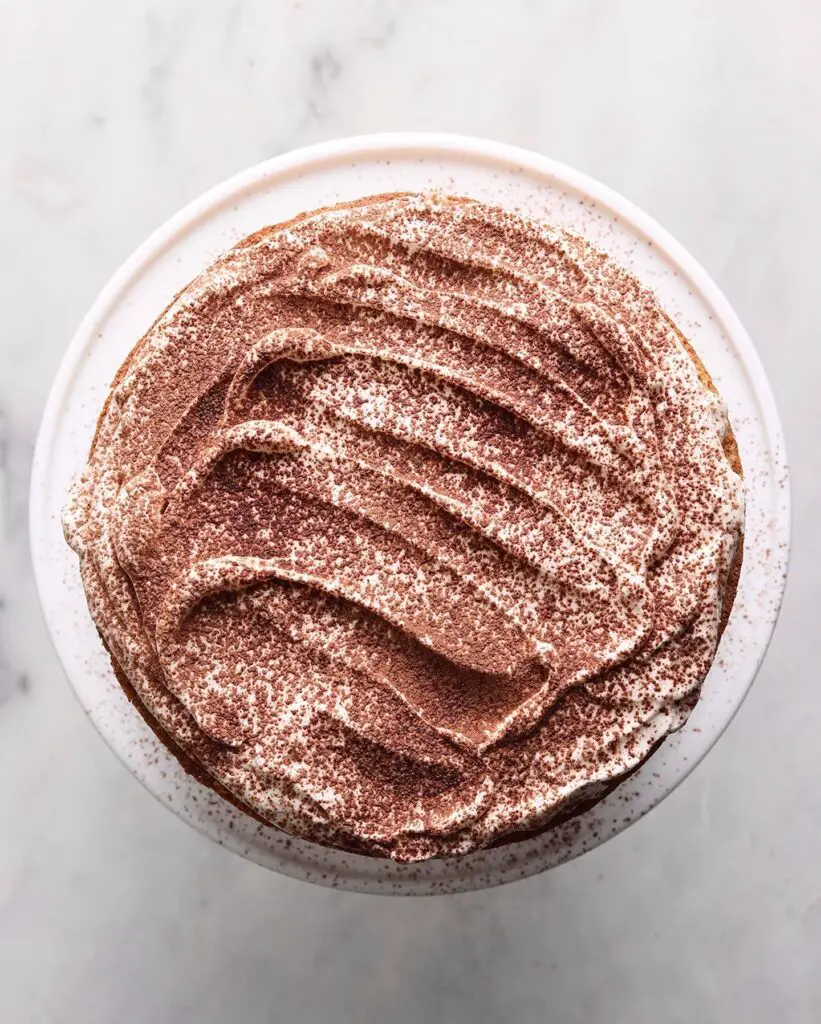
6 Tips for Success…
- Use cake flour: Cake flour has very low protein content, which helps this cake stay light and airy so it can soak up the coffee.
- Low and slow: The key to this style of cake is a low oven temperature and long bake time. (Here, it’s an hour and 10 minutes.) An oven thermometer would greatly help to make sure you’re baking at the right temperature.
- Do not disturb your baking cakes: Opening the oven for too long, or even bumping it too hard, could deflate your layers.
- Mise en place: This recipe has a lot of ingredients and comes together in three bowls (I know, ugh! But it must be this way.) Having everything measured out and at the right temperature will make this so much easier.
- Timing is everything: I recommend waiting until your cakes and the coffee are fully cooled before taking the heavy cream out of the fridge and starting on the whipped cream. This will ensure it’s silky smooth while going onto the cake. If it sits for too long in the bowl, it will start to set and deflate slightly.
- Upside-down cool-down: Cooling the layers upside down calls on the power of gravity to make sure the delicate crumb doesn’t sink back into itself.
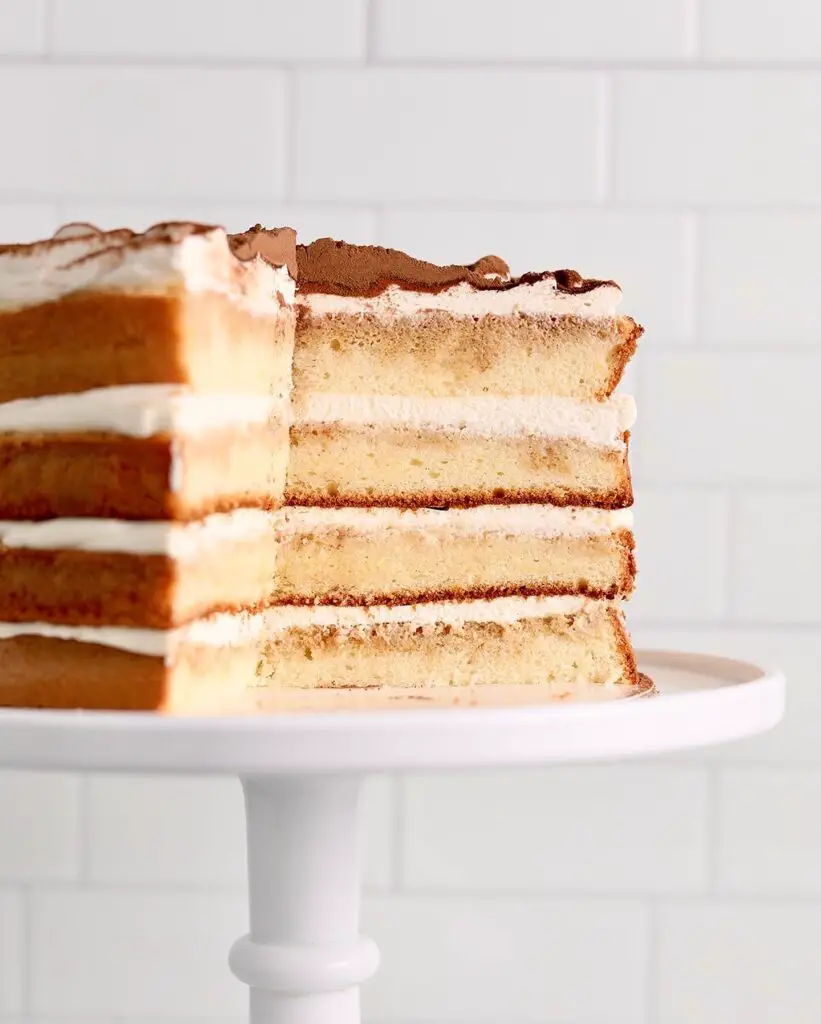
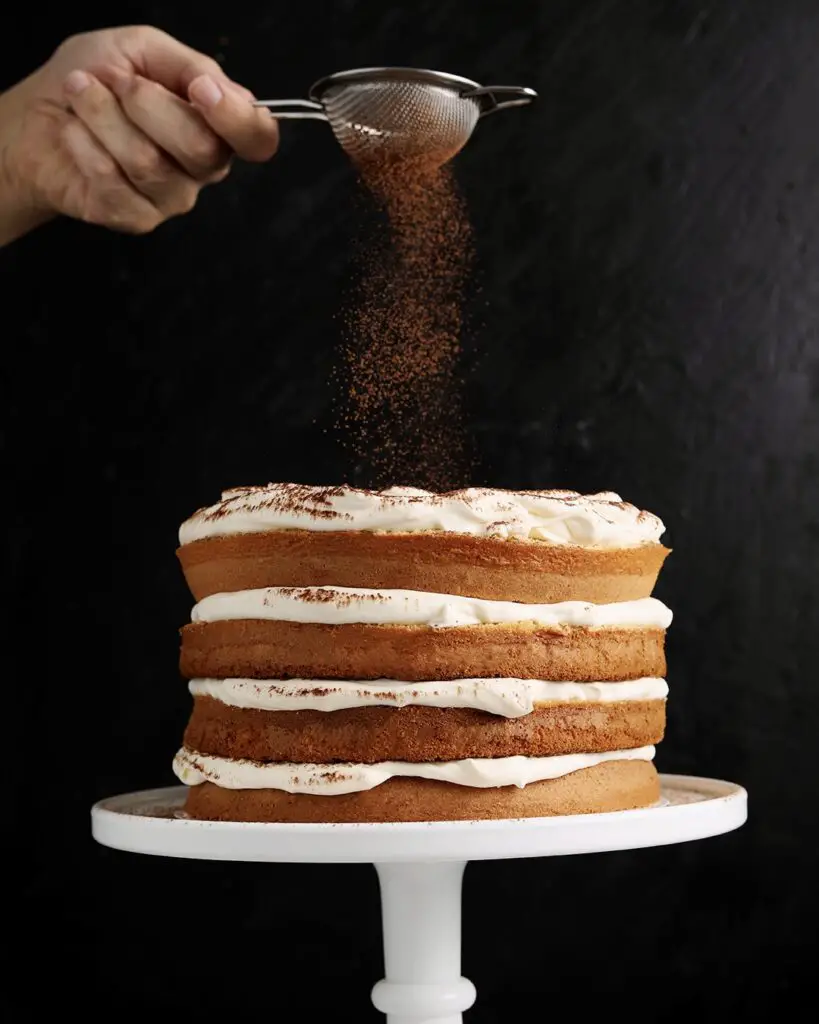
Did you make this tiramisu layer cake? I want to see! Tag me @easygayoven on TikTok and Instagram.
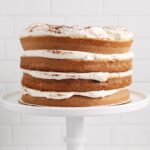
Tiramisu Layer Cake
Ingredients
Cake layers
- 2 ¾ cup cake flour (330 grams)
- ¼ teaspoon baking powder
- 1/2 teaspoon kosher salt
- 1 1/2 cup granulated sugar (300 grams)
- ½ cup vegetable oil (165 grams)
- 1 cup plus 1 teaspoon whole milk (247 grams)
- 1 teaspoon vanilla
- 4 large eggs yolks
- 6 large egg whites
- 1/4 teaspoon cream of tartar
Mascarpone whipped cream
- 1/4 teaspoon cream of tartar
- 1/2 cup powdered sugar (65 grams)
- 2 cups whipping cream (480 grams)
- 8 ounces mascarpone cheese room temperature
- 1 teaspoon vanilla
Assembly
- 1 ¾ cup (415 grams) very strong coffee, sweetened with 2 tablespoons of sugar and cooled
- 1 tablespoon of cocoa powder
Instructions
- For the cake layers
- Set the oven to 325° F. Place one rack in the very middle of the oven.
- Grease the bottoms of two 8-inch by 2-inch round cake pans with butter, then line the bottoms with a circle of parchment. Then butter and flour the sides of the pans. Set aside
- In a small bowl, whisk together the cake flour, baking powder and salt.
- To a large bowl, add egg yolks and one-third of the sugar. Mix to break up the yolks and whisk just until the color has lightened a bit.
- To the egg yolks, add the whole milk, oil and vanilla. Whisk to combine.
- In the bowl of a stand mixer fitted with a whisk attachment, add the egg whites and cream of tartar. Starting on low speed and working your way up to medium-high, beat the egg whites until they begin to look fluffy and opaque. Then, gradually add the remaining sugar, streaming it into the bowl. The egg whites should begin to look glossy. Stop when the mixture is able to hold “medium” or firm peaks, meaning you can lift the whisk straight up out of the bowl, flip it over and the very tip of the meringue will curl over, but not melt into itself.
- To the egg yolk/milk/oil mixture, add the dry ingredients. Gently whisk to combine (a few lumps are okay.) You don’t want to work it too much or it will tighten up.
- Add about one-third of the egg whites to the large bowl with the rest of the ingredients and, using a flexible rubber spatula, gently fold in the whites.
- Repeat this with the rest of the meringue, taking care to try to preserve that air we’ve so painstakingly whipped into the egg whites. (This, along with the baking powder is what will give your cake rise.)
- Once fully combined, divide the batter between the prepared pans (it’s worth it to use a scale to make sure the batter is evenly distributed.)
- Don’t let the batter sit around — get it right into the preheated oven and set a timer for 1 hour and 10 minutes.
- Do not disturb. Bumping the oven or opening the oven door too early can cause your cakes to collapse.
- Once the time is up, the cakes should be golden brown, pulling away from the sides of the pan and spring back when gently pressed. Remove from the oven and let them cool in their tins for 5 minutes, then flip them to cool on a wire rack while still in their tins. They should naturally release from the pan, but if they don’t, you can run a small knife or offset spatula along the side to loosen.
- Once cooled, slice the cake layers in half using a serrated knife so you end up with four cake layers.
- For the whipped cream
- In the bowl of a stand mixer fitted with a whisk attachment, beat the powdered sugar, vanilla and mascarpone cheese until smooth and creamy.
- Add the heavy whipping cream and cream of tartar.
- Start the mixer on low so it doesn’t splash all over you. Gradually increase the speed to medium.
- Don’t walk away — whipped cream can curdle in a matter of seconds. You want it to be spreadable but thick enough to hold a stiff peak.
- Assembly
- On a cake plate, place one cake layer so the inside is exposed and the “crust” is on the bottom. This will help the coffee soak in.
- Using a pastry brush or a squeeze bottle, drench the layer with about one-fourth of the coffee. Don’t be shy, keep going as long as it keeps soaking up the coffee (but save enough for the others!)
- Top the layer with one-fourth of the whipped cream. Repeat until for the next three layers.
- To finish, lightly dust the top with cocoa powder.
- This cake does benefit from about an hour to set and chill in the fridge, but you can serve it immediately or within a day.
Leave a Reply
Let's keep in touch...
Newsletter subscribers receive early access to new recipes, my best recipe, culture and product recommendations, and updates on all things easygayoven.
(Plus, paid members receive a bonus, exclusive recipe every month!)
For even more, follow along on Instagram and TikTok @easygayoven and at easygayoven.substack.com
© easygayoven 2022 | design by tonic
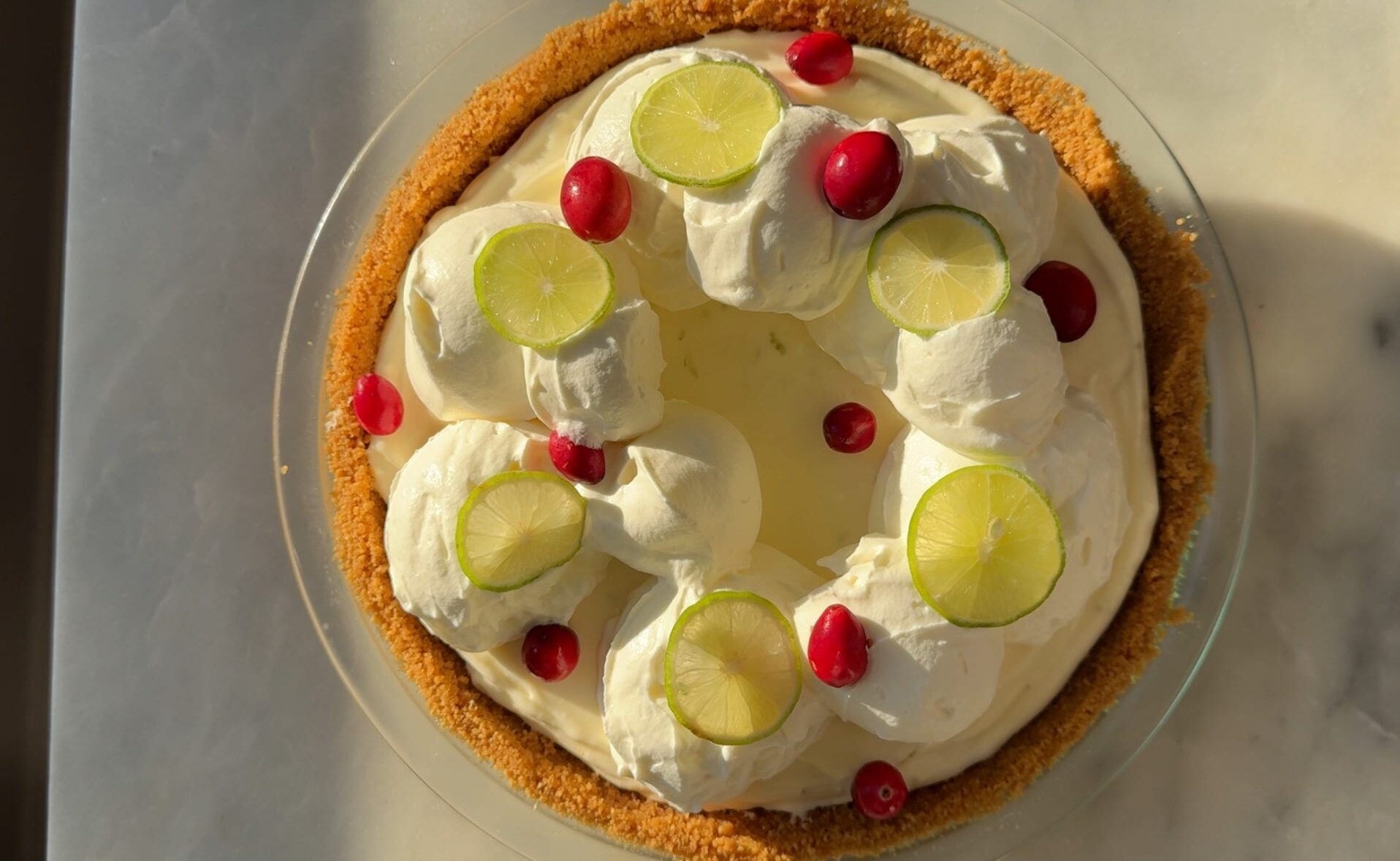
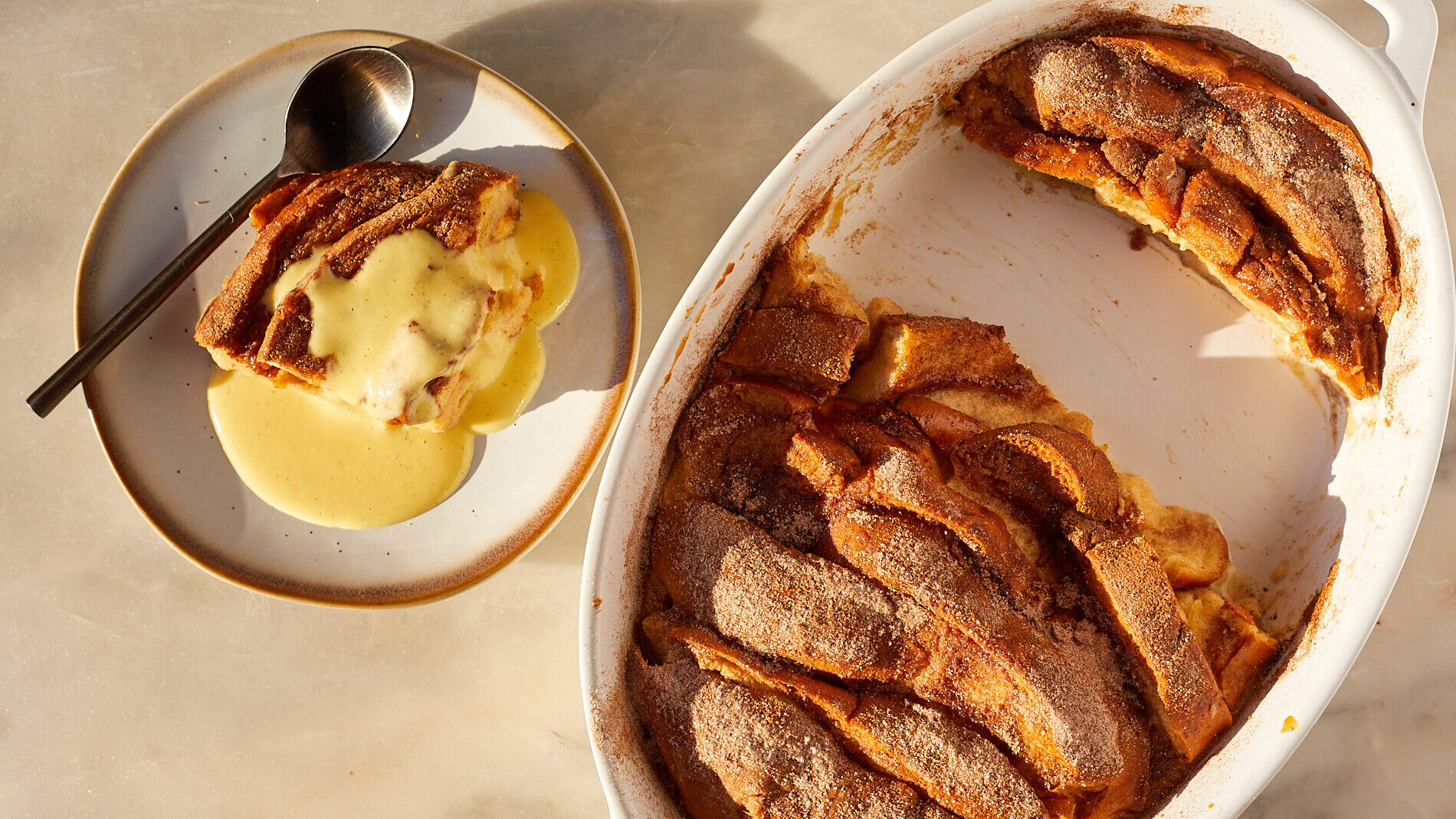
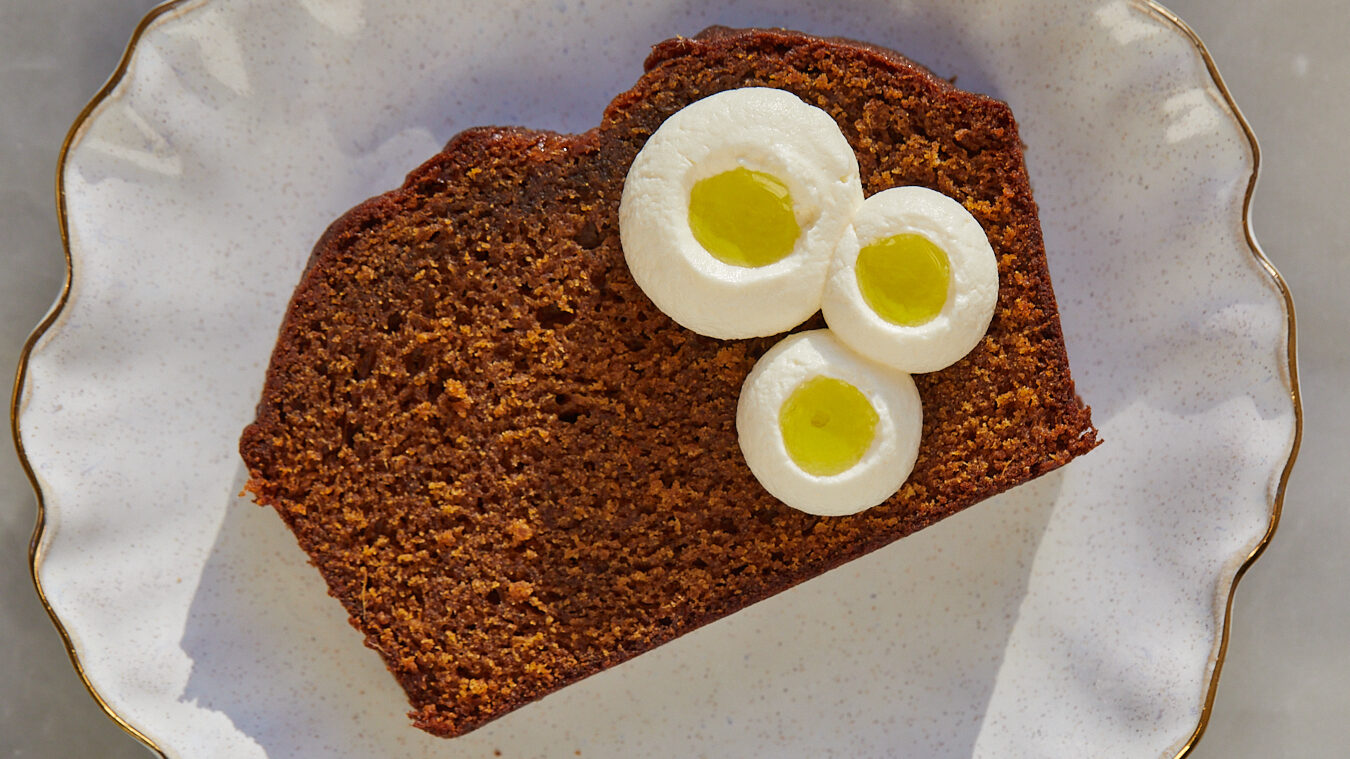
hi! i have not done this recipe yet but im planning on making it soon, could i use a homemade cake flour (sally’s bakking addiction) for this recipe ? thanks for your recipes <3
I wouldn’t for this recipe. Happy baking! —Eric